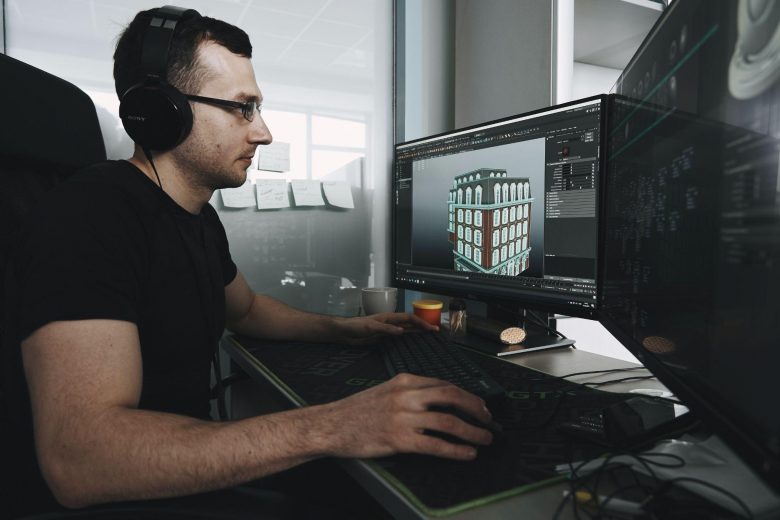Video games have come a long way since their inception, and the creation of realistic 3D characters is one of the key factors that have contributed to their immersive experiences. Modern-day video game players expect engaging gameplay and characters that feel like they belong in the virtual worlds they explore. These characters serve as the players’ avatars, allies, and adversaries, making it essential to get them right. They must look realistic and move authentically, which requires a blend of artistic creativity and technical expertise.
Lifelike 3D characters are everywhere, from the latest AAA video games on the PlayStation 5, Xbox Series X, and PC to the best sports betting apps the industry has to offer to advertisements for a wide range of products. Get your 3D characters right, and they can bring a product or game to life. However, get them wrong and the complete opposite is true.
Understanding the Basics
The basics of 3D character creation fall under three main categories: anatomy and proportion, character purpose, and concept art. These are three steps you must complete before anything else. Let us start with anatomy and proportion.
You must have a solid grasp of human anatomy to create convincing 3D characters. Study the skeltal structure, major muscle groups, and how they interact during movement. Anatomy reference books and online resources will come in handy as you learn about the proportions of the human body and the dimensions of body parts.
The next step is defining your character’s purpose in the game’s narrative. Ask yourself what role the character plays in the story, what their personality traits are, and how you want them to interact with other characters. Understanding your character’s purpose and backstory is a reference point throughout the design process.
Concept art is the third and final thing as you begin your 3d character building journey. Concept art is the strating point for bringing your character to life. Begin with rough sketches before refining them by adding elements of costume design and distinctive features that make the character unique. Your concept art acts as a blueprint for the 3D modeling phase.
Building the 3D Model

Selecting the right 3D modeling software is pivotal in your character creating journey. Blender is a popular free tool, with other popular choices, including Maya, 3ds Max, ZBrush, and Cinema 4D. Each tool has strengths, so choose one that best suits your project requirements.
Creating a basic 3D structure for your character is the initial step of the modeling process. Start with a base mesh that represents the overall shape of your character. It is common for this to be created using basic geometric shapes like spheres, cubes, and cylinders. Pay close atenton to edge loops and topology. Edge loops are circular lines of connected vertices that define the flow of the character’s surface. Research good edge flow techniques because they will help you in the long run.
Once you have a basic model, it is time to begin the sculpting process. Switch to a high-resolution sculpting mode to add finer details, such as facial features and clothing folds. Sculpting brushes like the standard, crease, and inflate brushes will become your best friends in this phase!
It is advized to use reference images as guides for adding details while sculpting. A visual reference helps ensure accuracy and realiasm in your character’s appearance.
Your character is starting to take shape, but it will not look like the finished article until you apply texture maps and UV mapping. Texture maps are required for your character’s skin, clothing, and accessories. They include diffuse (color), normal (surface details), specular (shininess), and displacement (height) maps. Photoshop and Sybstance Painter are superb for texture creation.
UV mapping helps prevent texture distortion, so spending time here is worthwhile. Unwrap your 3D model into a 2D representation to apply your textures accurately. Carefully arrange and optimize the UV islands to maximize texture and resolution quality.
Rigging and Animation
Rigging creates a skeletal structure inside your 3D character model. This skeleton is like a human, composed of bones and joints, enabling movement and articulation. Assign accurate weights to specific bons to control how different parts deform during animation. A character that is not well-rigged will not look realistic when it moves.
Animation breathes life into your character. It typically starts with keyframing, where you set keyframes at specific points in time to define the character’s poses or positions. The timing and spacing of keyframes are essential because they can significantly impact the perceived speed and fluidity of the animation.
Do not neglect facial expressions because emotions play a significant role in character developement. The animation process is critical to creating a realistic 3D character, which is why so many developers spend a small fortune on motion capture technology.
Bringing It All Together
The final steps of the process are lighting, rendering, and integration into your game engine. Lighting helps showcase your character’s realism. Use techniques like global illumination and physically based rendering (PBR) for more lifelike results. High-quality rendering enhance’s your character’s visual appeal.
Importing your 3D character into the game engine is the last stage. The character must fit seamlessly into the game environment, so test how they interact with other game elements, such as AI and physics. Test, optimize, and test again until you get things perfect.
Conclusion
Creating a realistic 3D character for video games is challenging yet vastly rewarding. There is much more to it than having excellent concept art and hoping it works well with your game. Everything starts with the base mesh model, the foundations of your creation. From there, detailed sculpting, extensive rigging, and animation begin bringing your character to life. Nobody gets 3D character creation right the first time, not even the most experienced 3D modelers. Continue honing your skills and delve deeper into your craft, and your characters will evolve into dynamic and memorable entities within your gaming world.




